Has Japanese whisky peaked?
By Tom Bruce-GardyneJapanese whisky exports have finally slowed after years of growth. But producers are bullish about the future of the sector.
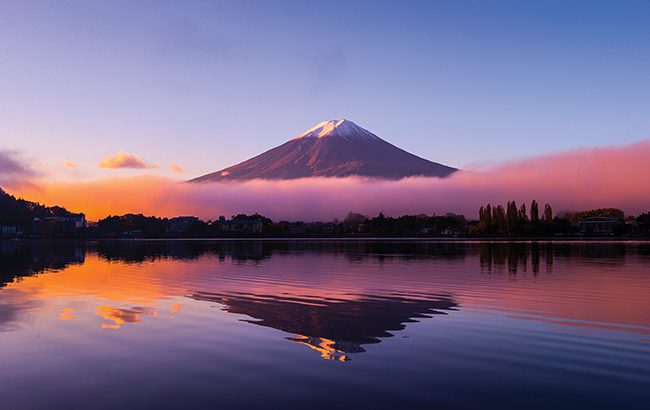
*This feature was originally published in the January 2025 issue of The Spirits Business magazine.
After 15 years of unprecedented growth, in 2023 exports of Japanese whisky slowed for the first time. Volumes were down by 9% to 12.9 million litres (equivalent to 1.4m cases), while value fell by 11% to ¥50 billion (US$318.5m), according to Japan Customs. Delving into the figures, the cause of this downturn soon becomes clear.
China, the category’s most valuable export market, was worth ¥19.6bn (US$124.6bn) in 2022. Twelve months later that figure had collapsed by a third. Japan’s relations with China have often been strained. In October 2023, Japanese seafood imports were banned following a dispute over the treatment of water from the defunct Fukushima nuclear power plant. This triggered a slump in Japanese restaurants in China, where much sake and Japanese whisky is drunk.
But other whiskies have been suffering in China as much, if not more. In September, the Scotch Whisky Association reported that Chinese shipments were down by 42.4% by value in the first half of 2024. Takeshi Niinami, Suntory Holdings’ CEO, blames the Chinese economy, which he believes has entered a long deflationary downtown that would be familiar to his compatriots.
“The deflation in China is very similar to the one we experienced,” he told the Opening Bid podcast in October. “The key issue is people have money but people don’t want to spend money.” This, coupled with overproduction, has caused prices to fall. But there was comfort for Suntory in the recent Chinese Alcohol Consumption Survey 2024, published by China Trading Desk.
Among whiskies, Suntory Toki had the highest brand awareness at 34.3%, twice that of Johnnie Walker.
As ever, the biggest consumers of Japanese whisky are the Japanese themselves. The domestic market was 17.8m cases in 2021, according to the country’s National Tax Agency, having more than doubled since its 2008 low point, thanks to the Highball boom that effectively saved the industry. The previous peak was in 1983, when a staggering 42.3m cases were consumed in Japan.
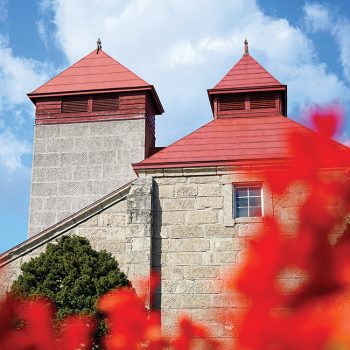
“As is being observed globally, there is a general sense of caution regarding the economy. However, the situation appears to be relatively moderate compared to Europe” says Yumi Yoshikawa, Chichibu’s global brand ambassador, about Japan. “From this perspective, while the consumption of luxury goods like whisky is declining, the decrease is happening slowly.”
Here, as in the West, Gen Z is drinking less than previous generations, but, according to Yoshikawa: “There appears to be a growing number of younger people who prefer to enjoy higher quality, more distinctive products, even if in smaller quantities.”
As for the Highball, she believes it “has moved beyond being just a trend and has solidified its place as a staple of Japanese drinking culture”.
That said, much Highball consumption is very generic, and fuelled by big, two- to three-litre bottles of low-cost whisky. “Not many people specify a brand,” says Ian Chang, master distiller and co-founder of Komoro Distillery, which went into production in June 2022. It is one of around 100 new malt distilleries that have followed the trail blazed by Ichiro Akuto, founder of Chichibu, which fired up its stills in 2008 as the country’s first whisky distillery since 1973.
There is no secret about what has inspired the stampede of new whisky makers. “Everyone is aware of the Japanese whisky shortage,” says Liam Hiller, operations director at specialist online retailer Dēkanta, which has partnered with distilleries like Ontake and the new Karuizawa.
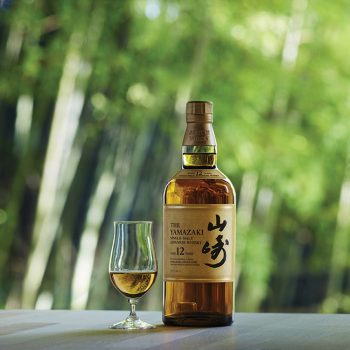
The shortage is particularly acute for single malts [see below] where older expressions of Suntory’s Yamazaki and Hakushu were on strict allocation, and often out of stock.
The vast majority of Japanese whiskies are blends, and the big players have worked hard to elevate the category’s status, in a way that has eluded much of the Scotch whisky industry. “I think it’s about the way they treat the craft of blending in Japan, where blenders are seen like Michelin-starred chefs,” says Hiller. Some are wholly Japanese, like Suntory’s Toki, and all the firm’s other Japanese whisky exports. Most are Japanese world blends, containing Scotch, Irish and North American whiskies in the mix.
There is no problem with that, so long as they are clearly labelled, like Nikka Days and Nikka from the Barrel. Unfortunately, not all brands are as transparent, even after new regulations from the Japan Spirits & Liqueurs Makers Association (JSLMA)’s came into force last April. As many commentators have pointed out, the rules stating that ‘Japanese whisky’ must be 100% distilled, aged and bottled in Japan, only apply to members of the JSLMA.
“I found examples of bottles of Bourbon and rye that had never left America, and were being called Japanese whisky,” says Hiller. With money to be made, such scams will continue. But, on balance, he believes the new rules have created “a more honest environment, and I think it’s a huge step forward for the industry. Anyone in Japan who doesn’t adhere to these rules will be noted. The industry is quite small, even though it has grown massively. Everyone knows each other.”
Confusion over the category’s definition clearly troubles Suntory’s Niinami. “It’s the most serious issue on my mind,” he told Time magazine in October. Since becoming CEO 10 years ago, he has sought to boost supply, but he admitted: “It’s still too small to match world demand, and that created a vacuum for fake Japanese whisky to create a misunderstanding among whisky drinkers who want genuine, authentic Japanese whisky.” He then made the rather startling claim that, by his reckoning “three-quarters of those whiskies boasting to be Japanese are not”. Eventually, he believes the Japanese government will stipulate the definition.
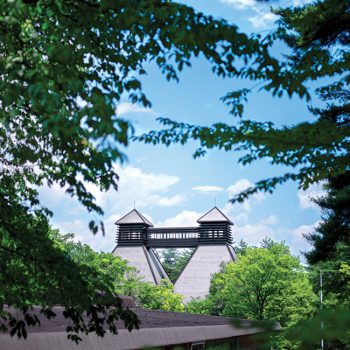
Suntory recently ploughed ¥10bn (US$63.5m) into its Yamazaki and Hakushu distilleries, which included introducing floor maltings and enhancing the visitor experience. As for ramping up distillation, a Suntory spokesperson says: “We have been steadily increasing our production capacity, and in terms of storage capacity, we have increased more than 50% by 2022 compared with 2016. One point to note is that we never compromise the quality of our whisky over quantity.” It seems its many fans will have to be patient.
Given the cyclical nature of Japanese whisky, with its sharp peaks and troughs, one can understand the reticence of the big distillers when it comes to pumping up the volume. The domestic market has been fickle in the past, and exports have slowed for the moment. Shipments to the US, the spirit’s second-biggest market, fell by 12% in volume, but only 4% in value to ¥10.5bn in 2023.
Importers remain upbeat, however. “This year we sold around 20% more bottles than ever before, though the average bottle value is completely down,” says Hiller about Dēkanta’s US sales in 2024. He remains impressed by the interest in cult names like Karuizawa, and says when the firm took its master distiller, Yoshiyuki Nakazato, to New York “the demand to speak to these people and taste the liquid is just enormous”.
In the UK, where Speciality Brands represents Nikka and Chichibu, both “had a good year, and Nikka was quite buoyed on the back of its 90th anniversary celebrations”, says Chris Seale, the managing director. He reports that “supply constraints have eased across most of the range” and that some sought-after age-statements like Nikka Yoichi 10 have returned.
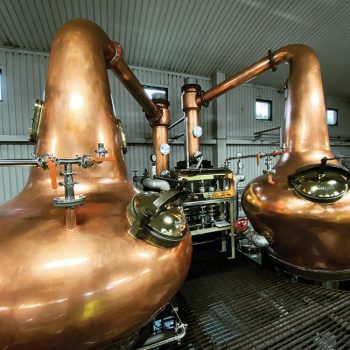
Japanese single malts
Compared with Scotland, “Japanese single malt production is very small”, says Ian Chang, Komoro’s master distiller. “Apparently, the annual capacity of Macallan is equivalent to all the 100 single malt distilleries in Japan.” The two biggest and most established are Suntory’s Yamazaki and Hakushu, which he reckons produce around 3.5 million – 4m litres of pure alcohol (lpa) between them. By contrast, Kavalan, where he was distillery manager for eight years in his native Taiwan, has a capacity of 10m lpa a year.
If Komoro increases production to more than 400,000 lpa this year as planned, it will be one of the larger newcomers. Chichibu, for all its cult following, produces just 50,000 lpa, though its sister malt distillery, which went into production in 2019, and will soon be releasing single malt, is five times the size. This year, the company’s new Tomakomai grain distillery will go into production.
There is always a time lag for new whisky distillers. “It’s three years for the first whisky, but probably five or six before they’ve got enough stock to be talking about international markets,” says Liam Hiller, Dēkanta’s operations director. One that is already exporting is Kanosuke, whose core range was rolled out to France, Germany, the US, and the UK last year, thanks to Diageo acquiring a minority stake in the business through its Distill Ventures in 2021. Meanwhile, there are rumours that Pernod Ricard is keen to produce Japanese whisky, having acquired a share of Ki No Bi gin in 2020.
Unlike Chichibu and Komoro, many of the newcomers have transitioned into malt whisky after decades of making sake and shochu. Whether they all have the knowhow to make top-quality single malt, and have the necessary access to the market remains to be seen. There are predictions of a shakedown in the years to come, in which only the fittest will survive.
Should Japanese whisky distillers do more to capitalise on tourism to boost the category?
Spokesperson – Hayashi Whisky
“Yes. Tourism offers an excellent opportunity to introduce international visitors to the unique qualities of Japanese whisky, which has gained significant recognition and acclaim globally in recent years. By enhancing the tourism experience, distillers can provide immersive, educational and authentic experiences that deepen consumer engagement and foster brand loyalty.”
Spokesperson – Shibui Whisky Company
“As the category of Japanese whisky continues to grow, it will be exciting for us to welcome more visitors to Japan to experience first-hand what makes our distilleries and blenders so special. It is promising to see developments past just the largest brands in the space, and it’s important for all distilleries in Japan to create an inclusive space for the category to flourish in the same way American, Irish and Scottish whiskies have. Ensuring we build the category is the first necessary step towards ensuring Japan benefits from the growth of these exceptional whisky offerings and the tourism revenue this provides.”
Rick Bennett-Baggs – global brand director, Marussia Beverages, owner of Hatozaki Japanese whisky
“The reported 30% rise in tourists to Japan in 2023 presents a prime opportunity for Japanese whisky distillers to elevate the category and their brands’ global appeal. This year, Hatozaki has welcomed visitors from four countries to our Kaikyō Distillery in Hyogo, showcasing our unique craftsmanship approach in modern whisky making, while offering authentic cultural immersion. In the spirit of omotenashi – the art of hospitality – our goal is to provide a genuine, memorable experience for both locals and tourists. We’re excited to introduce a new brand home programme soon for newcomers and those eager to savour new, delightful experiences.”
Serdar Pala – global sales director, Kamiki Shuzo
“At Kamiki Shuzo, we offer something truly unique: the world’s first whisky finished in Japanese cedar casks, crafted amid the serene beauty of Sonimura’s forests. As the first whisky distillery in Nara, we produce exceptional whisky and believe tourism is a key way to share our story and legacy with the world. Visitors can immerse themselves in our private Japanese single malt cask programme, an opportunity to invest in and own part of our heritage, connecting deeply with the artistry behind each bottle. Tourism highlights Japan’s craftsmanship, natural beauty, and the innovation that defines Kamiki Shuzo.”
Related news
Argentinian distillery bottles world’s first Antarctic-aged whisky
